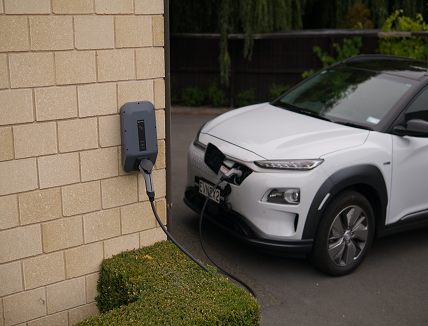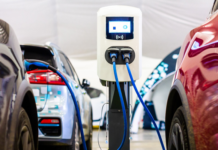
With each passing day, the popularity of electric vehicles (EVs) is rising, accompanied by the growing government support for these eco-friendly vehicles. People are increasingly embracing EVs as a sustainable option with a stylish appeal. According to a recent Extrapolate study, the global electric vehicles market is expected to reach a valuation of around USD 974.15 billion by 2030.
The billion-dollar milestone reflects the incredible growth of EVs. Let’s dive in and learn more about them.
What are Electric Vehicles?
Electric vehicles (EVs) are powered by electric motors, draw energy from batteries, and are rechargeable from an external source. They encompass two main types: all-electric vehicles, exclusively powered by electric motors, and plug-in hybrid EVs, capable of running on both electric power and internal combustion engines.
EVs provide a cleaner and more sustainable alternative to traditional vehicles, mitigating pollution, global warming, and resource depletion. Various EV types, including pure-electric, plug-in, and range-extended vehicles, are available in models such as sedans, SUVs, and minivans to suit diverse driving preferences and needs.
What Are the Advantages of Electric Vehicles?
There are numerous benefits to using EVs, some of which are listed below.
- Cost Savings:
- EVs offer substantial savings on running expenses due to lower charging costs compared to petrol or diesel.
- Utilizing renewable energy sources like solar power can further reduce electricity costs for charging EVs.
- Environmental Impact:
- Zero tailpipe emissions from EVs contribute to a reduction in air pollution and a cleaner environment.
- EVs emit no pollutants, leading to decreased CO2 emissions and a more sustainable planet.
- Convenience and Efficiency:
- EVs are user-friendly, quiet, and cause lesser noise pollution compared to traditional ICE vehicles.
- Charging EVs at home provides convenience and flexibility, eliminating the need for visits to fuel stations during peak hours.
- Lower Running Costs:
- Overall running costs for EVs are significantly lower than those for traditional petrol or diesel vehicles, resulting in long-term savings.
- EVs typically incur lower service and maintenance costs, along with reduced or no vehicle tax.
- Performance and Driving Experience:
- EVs offer superior driving experiences with responsive acceleration and regenerative braking, enhancing overall driving dynamics.
How Much Does It Cost to Charge Electric Vehicles?
Electric vehicle owners must understand the pricing structure at public EV charging stations. Regulations vary by state, influencing how these stations calculate charges, which generally fall into two main categories.
The first method mirrors residential electricity billing, based on kilowatts per hour (kWh), with rates typically measured in cents per kWh. Level 2 chargers operate at home at around 32 amps, delivering 7 to 19 kW of power, while public Level 3 stations offer even higher power output. Faster home chargers, like the JuiceBox 40, can add 32 to 35 miles of range per hour. With an average EV capacity of 68 kW, a full charge via a Level 2 charger takes 4 to 10 hours.
The charging cost formula is:
Charging Cost = (VR/RPK) x CPK
- Where RPK stands for Range Per Kilowatt-hour (kWh), VR indicates Vehicle Range, and CPK refers to the Cost Per Kilowatt-hour (kWh).
Alternatively, some public stations charge by the minute, adhering to state-mandated flow rates. Providers then set pricing based on this flow, typically rounding time up to the nearest 30 seconds.
Charging an electric car at public stations is pricier than home charging, with rates ranging from $0.30 to $0.60 per kWh, compared to around $0.16 per kWh at home. Costs vary based on local electricity rates, regulations, and charger types. Level 2 chargers at public stations usually charge $0.20 to $0.25 per kWh, while Level 3 chargers range from $0.40 to $0.60 per kWh.
Public charging entails a markup of at least 100% compared to home charging. Consequently, most EV owners prefer home charging for its cost-effectiveness and convenience rather than at public stations.
How Do Electric Vehicles Work?
Electric vehicles, also referred to as battery electric vehicles (BEVs), rely on an electric motor rather than an internal combustion engine. These vehicles are powered by a large traction battery pack, which supplies energy to the electric motor. To recharge, the vehicle must be plugged into a wall outlet or electric vehicle supply equipment (EVSE). Since they operate on electricity, all-electric vehicles produce no exhaust emissions and lack traditional liquid fuel components like fuel pumps, fuel lines, or fuel tanks.
Key components of an all-electric car include the battery and the charge port, which facilitate connection to an external power supply for recharging the traction battery pack. Unlike traditional internal combustion engine vehicles, EVs do not rely on burning fuel for energy; instead, they utilize electrical energy stored in their battery packs to power the electric motor connected to the wheels, propelling the vehicle forward. This results in fewer moving parts and generally requires less maintenance, such as no oil changes.
Electric cars function by converting electric energy into mechanical energy, which is then used to generate kinetic energy and enable vehicle motion. The electric motor efficiently converts electric charge into mechanical energy, offering a simpler and more efficient alternative to the combustion engines commonly found in traditional vehicles.
Are Electric Vehicles Fostering a Sustainable Shift?
Electric vehicles play a pivotal role in the transition to clean energy by significantly reducing emissions and aiding in the decarbonization of the transportation sector. They are instrumental in addressing global emissions, particularly in road transport, which contributes to around one-sixth of total emissions worldwide. While the expansion of the EV sector aligns with the energy transition goals of wealthier nations, it also underscores the need to ensure a just and sustainable transition that includes less developed communities.
EVs charged using electricity from renewable sources offer a promising solution to reduce future emissions of greenhouse gases and air pollutants. They are vital components of a low-carbon energy future. Furthermore, the widespread adoption of electric transportation infrastructure and energy storage, alongside advancements in energy efficiency technologies, drives the momentum toward clean energy transitions.
A clean energy transition can be achieved in two ways:
- Unidirectional Charging (V1G): Through smart charging, EVs can be charged during periods of low electricity costs or when renewable energy supply is abundant. This enables connected vehicles to leverage solar energy during daylight hours or inexpensive energy during the night.
- Bidirectional Charging (V2G): In addition to unidirectional charging, connected vehicle batteries can also supply power to the grid during periods of high demand. This bidirectional flow allows the grid to draw power from EV batteries when needed, enhancing grid flexibility and reliability.
Which Region Cashes Most Out of EVs?
North America is leading the EV industry mainly backed by stringent environmental regulations and lucrative government incentives that are propelling the adoption of electric vehicles across the region. These policies not only promote sustainability but also incentivize individuals to opt for cleaner transportation alternatives. For instance, the U.S. government incentivizes electric vehicle purchases through tax credits ranging from $2,500 to $7,500.
Moreover, the growing charging infrastructure across the continent has been pivotal in facilitating the widespread uptake of EVs. With an increasing number of charging stations dotting urban landscapes and highways, range anxiety is becoming less of a concern for prospective buyers.
Furthermore, strategic partnerships between automotive manufacturers and technology companies have played a crucial role in advancing electric vehicle technology. Collaborations aimed at enhancing battery efficiency, developing autonomous driving capabilities, and improving user experience are promoting innovation in the sector.
Electric Vehicles for an Energy-Efficient Future
Electric vehicles represent a pivotal shift toward sustainable and efficient transportation, offering significant advantages such as reduced emissions, lower running costs, and improved driving experiences. Their role in clean energy transitions is paramount as they facilitate the decarbonization of the transportation sector and pave the way for a greener, more sustainable future.
Author
Name: Aparna M.A
Email: https://www.linkedin.com/in/aparna-m-a-9b59451b0/ Bio: Aparna is an enthralling and compelling storyteller with deep knowledge and expertise in creating analytical, research-depth content. She is a passionate content creator who focuses on B2B content that simplifies and resonates with readers across several sectors including automotive, marketing, technology, and more. She understands the importance of researching and tailoring content that connects with the audience.


















